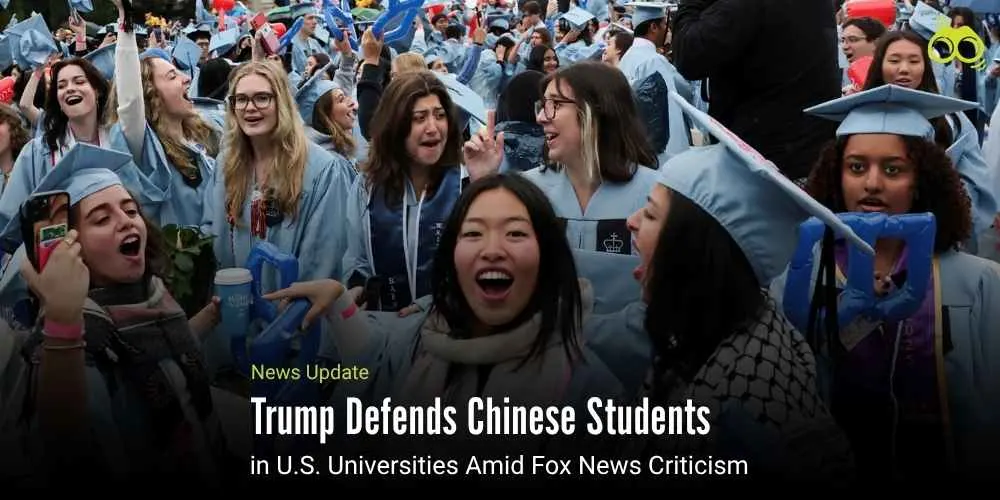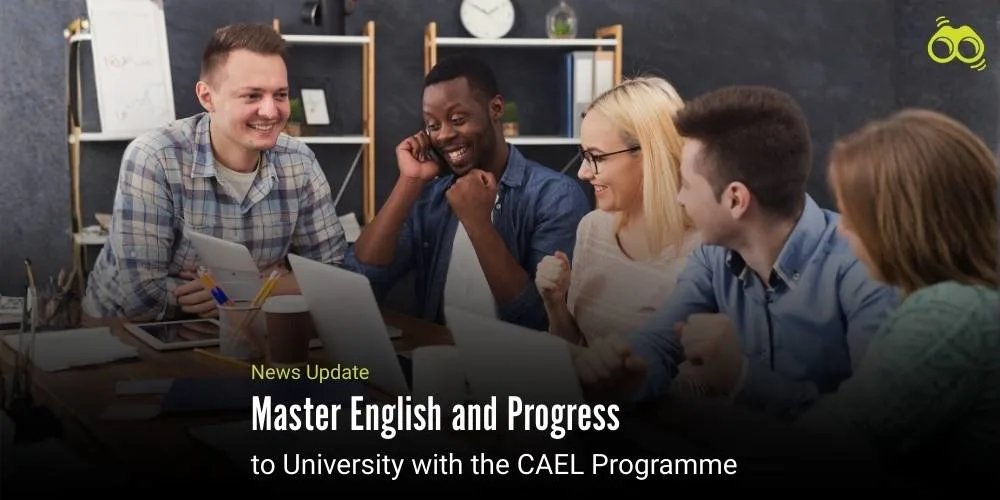France Drawn into Trump’s Remarks Amid Chinese Student Controversy
Higher Education in the US Shaped by Foreign Policy, Not Planning
In recent months, US policy towards international students has shifted noticeably. Earlier on, the President of the USA, Donald Trump, came out with plans to restrict the visas of Chinese students and discuss even tougher conditions with other foreign nationals. The major moving force behind this was national security threats, intellectual property theft, and growing political tensions with China-issues manifest in other restrictions that were to be applied to several other students from different foreign countries.
The administration gradually reversed itself later by understanding the fact that international enrolment: for example, these students come to US-American universities and the economic importance it adds to the pocket of an American. Trump was also reflecting the latest defence of Chinese students against the overall political debate, as well as the practical need to sustain US higher education through global student participation.
It is in this regard that the president of the United States, Donald Trump, has been reported to have made comments against France to the Fox News host Laura Ingraham while defending his move to allow Chinese students to enrol in American universities. Trump's remarks were said to imply that welcoming students from other countries is a good thing, while Ingraham countered that the Chinese were engaged in spying and stealing intellectual property.
Laura Ingraham, in the two interesting exchanges, said that the Chinese are spying and stealing intellectual property. Trump asked whether it is better to allow that in the French, to which Ingraham conceded, but the president stated that he was not convinced. At the time, almost one-fourth of all international students in America were from China, illustrating the reason that this was an important debate.
Observers noted a lot of tension between Trump and his counterpart, French President Emmanuel Macron, throughout much of Trump's second term. Allegedly, sticklers arose about the Russia-Ukraine war and the Israel-Hamas war. Notably, Macron was the first member in the West of the UN Security Council and the first member of the G7 to declare the recognition of a Palestinian state. This announcement constituted a major diplomatic shift from Macron in May 2024.
Reports alleged that Trump had met Chinese leader Xi Jinping recently in South Korea at, end of last month. He stated that the two almost totally agreed. Earlier, his administration announced its intention to vigorously fight in revoking the student visas for Chinese students who study there, but that decision was later reversed. That raised issues regarding international student policy and US education relations with China. The US gave around 289,000 student visas to Chinese people in 2023, compared to around 369,000 in 2019, with such a decrease indeed very significant.
Institute of International Education reports indicate that China has probably always been among the largest producers of foreign students in America. Analysts explained that one in four international students in the United States was Chinese. One of the brightest minds in China's education sector for many decades has been viewed and even called higher education, which will be a celebration and offer more in the job avenue. In 2023-24, 277,398 students from China learned in US universities.
Reports indicated that China's numbers were the highest for 15 years until India overtook it last year. Data from the Open Doors database also confirmed this trend. The number of Chinese students peaked at over 372,000 during the 2019-2020 academic year and then dropped to about 270,000 as of 2023-2024. Observers indicated the significant link between the drop and the Covid-19 pandemic, and to increasing frictions between the two governments. India had 331,602 enrollments for 2023/24, surpassing China's 277,398. This marks a 23 per cent increase for India and a 4 per cent decrease for China.
While commentators emphasise the revenue, cultural exchange, and academic talent that Chinese students add to US universities, these students also encounter issues, such as visa rules, political tensions, and a lack of trust in international student policy. The overall picture shows that the future of higher education in the US would involve collective pressure on institutions, governments, and students. As NAFSA revealed, international students were said to have contributed US$43.8 billion to the US economy for the 2023/24 session, supporting 378,000 jobs, out of which almost 25% were Chinese students.
Editor’s Note
The recent swings in United States policy concerning international students, along with statements made by President Trump, are expected to bring far-reaching effects. On the positive side, cases reversed of earlier visa restrictions show a recognition of the economic and academic value that international enrolment brings to American universities. For instance, international students brought in $43.8 billion into the US economy in 2023/24, supporting 378,000 jobs, with almost one quarter of this impact coming only from Chinese students. On the negative side, while defending the Chinese students, the president's remarks on France highlight how education policy is now closely linked with diplomacy. As such, universities are not only spaces of learning but also sites where global politics and diplomacy are played out. In addition, the declining Chinese enrolment from its peak of 372,532 in 2019/20 to 277,398 in 2023/24, against the rise of Indian enrolments to 331,602 in 2023/24, signifies a great change in the balance of international student mobility. Thus, US universities now need to respond to changing demands while managing sensitive political issues. Further, it puts a highlight on the challenges faced by international students away from the said developments. By way of visa rules, political tensions, or sheer lack of trust in a given policy, there is a certain level of uncertainty created, even as universities continue to lean heavily on international students for the very contributions they bring in terms of tuition, cultural exchange, and academic talent.
Skoobuzz notes that these reforms and statements suggest the future of American higher education will be shaped more by foreign policy than by institutional planning. As a result, international students are not only part of the educational debate but also central to political discussions, with their presence influencing how the United States builds its relations with other countries.
FAQs
Q1. Why did President Trump defend Chinese students in US universities?
President Trump had earlier supported restrictions on visas for Chinese students, citing national security and intellectual property concerns. However, his administration later reversed course, recognising that international enrolment is vital for the economy and for sustaining higher education in the US. His defence of Chinese students reflects this shift, as well as the need to keep American universities globally competitive.
Q2. How many Chinese students study in the United States today?
According to the Institute of International Education, there were 277,398 Chinese students enrolled in US universities in 2023/24. This represents about one in four international students in America, showing their significant role in higher education.
Q3. What challenges do Chinese students face in US colleges?
Chinese students in US universities often face challenges such as stricter visa rules, political tensions between the US and China, and concerns about trust in international student policy. These issues create uncertainty, even though universities rely heavily on their contributions to tuition fees, cultural exchange, and academic talent.
Q4. How do US universities benefit from Chinese enrolment?
Chinese students contribute greatly to the financial health of US universities. In 2023/24, international students added $43.8 billion to the US economy, supporting 378,000 jobs. Nearly 25% of this impact came from Chinese students, making them essential for both institutional budgets and local economies.
Q5. What are the visa rules for Chinese students in America?
Visa policies have shifted in recent years. In 2019, the US issued around 369,000 student visas to Chinese nationals, but by 2023, this number had dropped to 289,000. While restrictions were initially announced, they were later reversed, showing how visa rules remain closely tied to wider US–China relations.
Q6. How has student enrollment changed between China and India?
China was the top source of international students in the US for 15 years. However, in 2023/24, India overtook China with 331,602 students compared to China’s 277,398. This marks a 23% increase for India and a 4% decline for China, signalling a major shift in international student mobility.
Q7. What does this mean for the future of higher education in the US?
Analysts suggest that the future of American higher education will be shaped more by foreign policy than by institutional planning. International students are now central to both educational and political debates, influencing how the US builds relations with other countries while sustaining its universities.














0 Comments (Please Login To Continue)